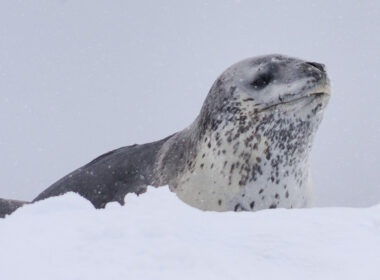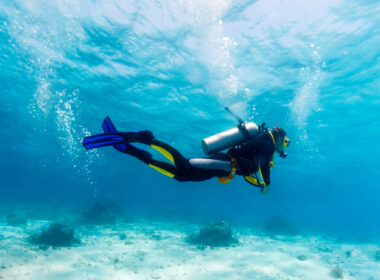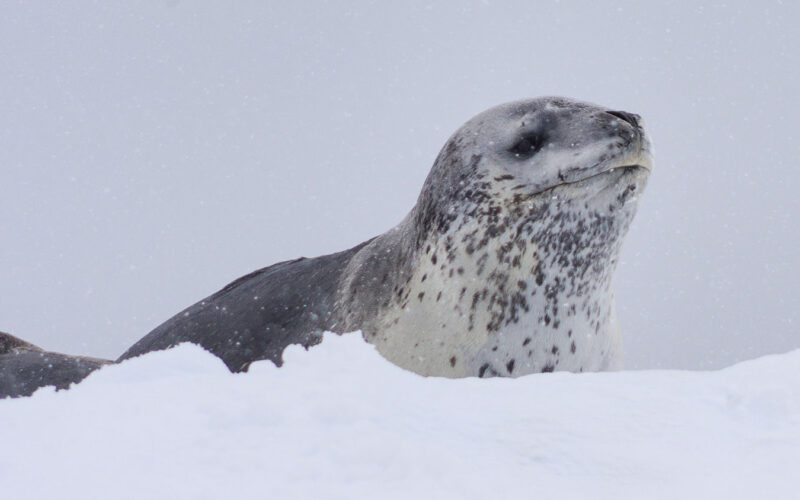Leopard seals are some of the most majestic creatures of the Antarctic. Found in the remote waters of Drake Passage, off of Cape Horn, these powerful predators are the second largest species of seal in the region. With their impressive size and hunting behavior, leopard seals have no natural predators, with the exception of the orca. Diving with leopard seals at Drake passage is an experience like no other.
In this blog post, we will explore the fascinating world of leopard seals of Drake Passage, and take a closer look at their unique characteristics and behaviors.
Diving with Leopard Seals at Drake Passage
Drake Passage is a body of water located between South America’s Cape Horn, Chile, Argentina and the South Shetland Islands of Antarctica. This passage is considered one of the most treacherous voyages for ships to make due to its strong winds and large waves. Despite the harsh conditions, Drake Passage is also home to some of the most diverse wildlife in the world.
The passage provides a habitat for a wide variety of sea birds such as albatross, petrels and shearwaters. It is also teeming with cetaceans like blue whale, sperm whale, hourglass dolphin and other species. Adelie penguins can also be found here, along with the majestic leopard seal which is the second largest species of seal in the Antarctic. This striking creature has no natural predators aside from the orca, giving it the role of king in these waters.
Characteristics
The leopard seal is one of the largest species of seal in the Antarctic, coming in second to the largest species, the southern elephant seal.
These impressive marine mammals have a disproportionately large head, massive jaws and imposing teeth. Its muzzle, throat and belly are light grey scattered with dark grey and black spots. Its powerful underwater vocalizations can be heard at the surface and felt through the ice.
Newborn pups measure more than 1 meter / 3 feet long and may weigh close to 30 kg / 66 lbs while adult females can reach up to 3.6 meters / 11 feet in length and 500 kg / 1100 lbs in weight. Adult males are around 3 meters / 9 feet in length and can weigh up to 300 kg / 660lbs.
The leopard seal is known for hunting penguins and other seals in the Antarctic.
Hunting Behavior
Leopard seals are formidable hunters, capable of taking down prey much larger than themselves. The diet of a leopard seal depends on its size; smaller seals will feed more off of krill, fish, squid, and penguins, while larger seals will attempt to go after other members of the seal family. To catch penguins, leopard seals lurk in the waters near edges of ice or land where penguins have congregated. They then catch their prey in the water and thrash them around keeping a tight grip on them with their jaw.
Leopard Seals jaws have a unique arrangement with large canines that are designed to latch onto prey, but the back molars lock together in such a way that they can strain krill from the water, similar to how baleen whales sieve krill. As such, Leopard Seals are one of the top predators of the Antarctic food chain.
Interacting with Leopard Seals
Leopard seals are an iconic species of the Antarctic, second only to the elephant seal in size. Despite their intimidating presence, leopard seals generally display curious behavior when interacting with humans, often approaching divers and snorkelers at the surface.
Although these interactions may appear aggressive, there have been little to no reported incidents of attacks. Most commonly, leopard seals will circle divers or come close to them, as if inspecting them. This curious behavior has been observed since the first dives in Antarctica, and is likely due to the seals’ lack of experience with humans.
Interacting with leopard seals is a great privilege that few people will ever get to experience, and should be done with great respect. It is important to remember that these animals are wild, and must be treated as such. Do not attempt to touch or feed them, and keep a respectful distance. If a leopard seal becomes too close, back away slowly and calmly; do not make any sudden movements. With these precautions in mind, divers and snorkelers can enjoy a unique encounter with one of the most majestic creatures of the Antarctic.
Have you ever wondered if we are the hunters or the hunted? Check out this blog post about diving in the Azores.
DiveSafe
Book the trip of a lifetime with Behind the Mask Travel and discover the most amazing places above and below the water. Orcas, sharks, whales, leopard seals, penguins and so much more!
Are you planning to dive with leopard seals or go on a diving vacation? We recommend purchasing our specialized diving and travel plans to assure a smooth ride and in the event of something going wrong we’ll be there to see you through, covering your costs along the way.
For our full policy descriptions and more information on joining the DiveAssure Association go to www.diveassure.com






